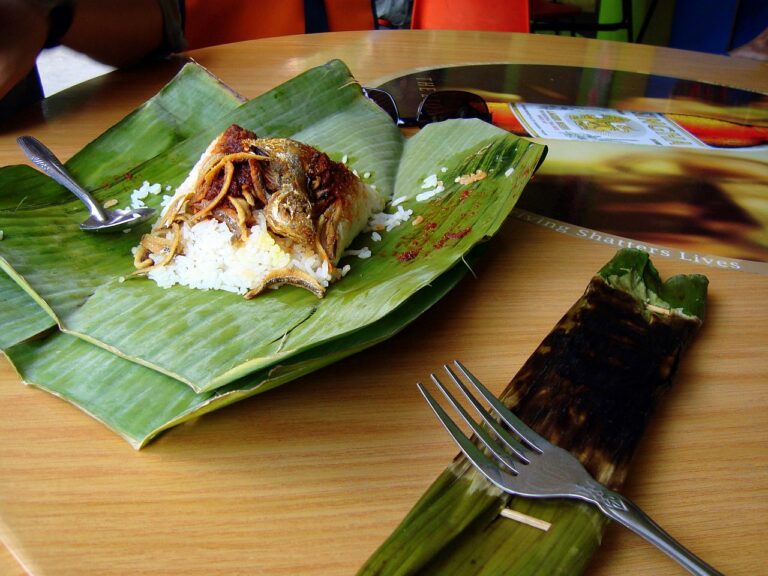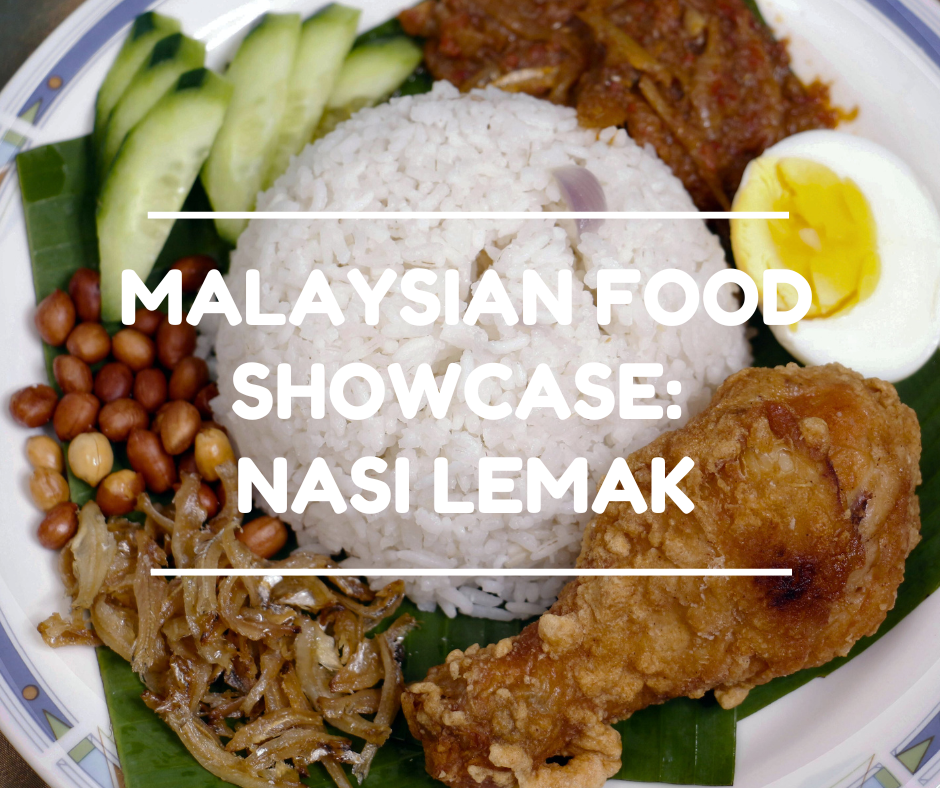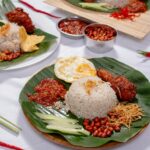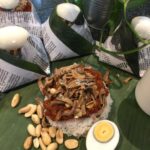Nasi Lemak: From Kampung Fuel to Malaysian Icon
If you grew up in Malaysia, chances are you can smell Nasi Lemak before you even see it. That warm cloud of coconut milk and pandan, sambal’s smoky heat hanging in the air. It’s enough to stop anyone mid-step. Born in the Malay kampung as a practical field meal, Nasi Lemak has journeyed from padi fields and fishing boats to city kopitiams, roadside stalls, restaurants and even the menus of international five-star hotels.
The earliest Nasi Lemak was built for stamina. Farmers, fishermen, and estate workers needed something portable, energy-dense, and able to last without reheating. Rice was cooked not in plain water but in santan (coconut milk), with knotted pandan leaves for fragrance. The fiery paste of sambal added spice and salt, anchovies brought the crunch and texture, and an egg gave extra protein. Everything was wrapped snugly in banana leaves, a clever, eco-friendly packaging that locked in moisture and perfumed the rice.
Its name says it plainly. Nasi lemak meaning “rich” or “fatty rice” in Malay. It is a nod to the rich texture and aroma of coconut milk. The first written record dates back to 1909, when British scholar Sir Richard Olof Winstedt described Malay cooks boiling rice in coconut milk during special occasions, pairing it with fish and vegetables. But oral history paints a much longer story. Ask any elders and they’ll tell you there was never a time Nasi Lemak wasn’t available.
Making a good Nasi Lemak is an art. The rice must be fluffy yet rich, each grain coated in coconut creaminess. Some cooks add sliced ginger and shallots, not just for aroma but to actually help the rice keep longer. Sambal is the heart where dried chilies boiled and blended smooth, fried until “pecah minyak” (the oil separates) for depth of flavour. A little gula Melaka adds a caramel warmth, tamarind water brings balance, and some old-school cooks sneak in ground fried anchovies for an umami kick. Side dishes seal the deal: crunchy roasted peanuts, garing (crispy) ikan bilis, cooling cucumber slices, and egg (boiled, fried, or even sunny-side-up) in modern cafés.
Traditionally a breakfast dish, but Nasi Lemak’s hours have stretched with Malaysia’s urban shift. By the late 20th century, it was no longer confined to morning markets. School canteens sold it at recess, warungs served it at lunch, and night stalls kept it warm past midnight. With this came more elaborate toppings like ayam goreng berempah with turmeric and spices, beef or chicken rendang slow-cooked in coconut gravy, sambal sotong (squid), paru goreng (fried beef lung), or kangkung belacan (water spinach stir-fried with shrimp paste).
Beyond Malaysia, Nasi Lemak has its cousins. In Singapore, Nasi Lemak often leans milder, sometimes with fried fish fillets and nuggets. In Indonesia’s Riau and Sumatra, the sambal is hotter and sharper with terasi, paired with telur balado (chilied eggs) and kerupuk crackers.
Of course, not all changes are traditional. Over the years, Nasi Lemak has inspired many novelty twists because everyone tried to be innovative with the national dish. Now there are Nasi Lemak curry puffs, Nasi Lemak burger, Nasi Lemak chocolate and even Nasi Lemak ice cream. Purists shake their heads, insisting the true form must always have coconut rice and sambal at its core.
Still, the magic of Nasi Lemak lies in its balance between richness against heat, crisp against soft, fresh against spiced, and in its ability to adapt without losing its soul. Whether you eat it off a banana leaf by the roadside, scoop it from a wax-paper pyramid at your office desk, or savour it on ceramic plate in a hotel breakfast buffet, the essence is the same.
And here’s my personal tip: if you can, eat it with your hands. Tear a bit of rice, drag it through the sambal, pinch a peanut and anchovy into the mix. Let the flavours mingle on your fingers before they hit your tongue. That’s when you’ll understand why Nasi Lemak is not just merely a meal, but a memory that Malaysians keep remaking, bite after bite.





